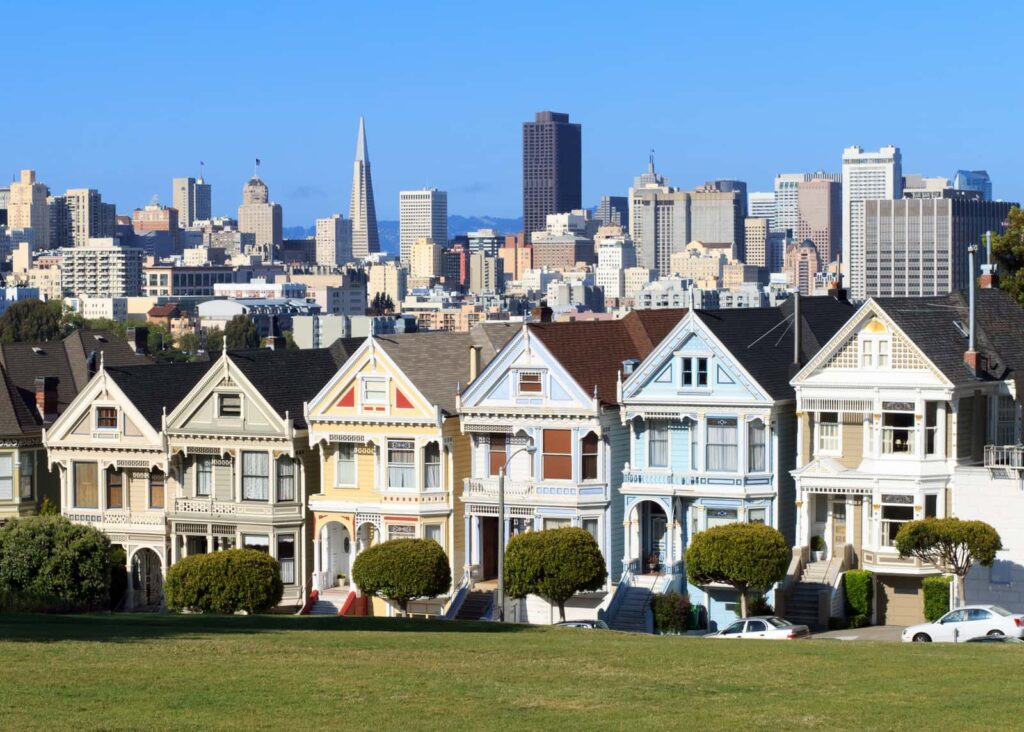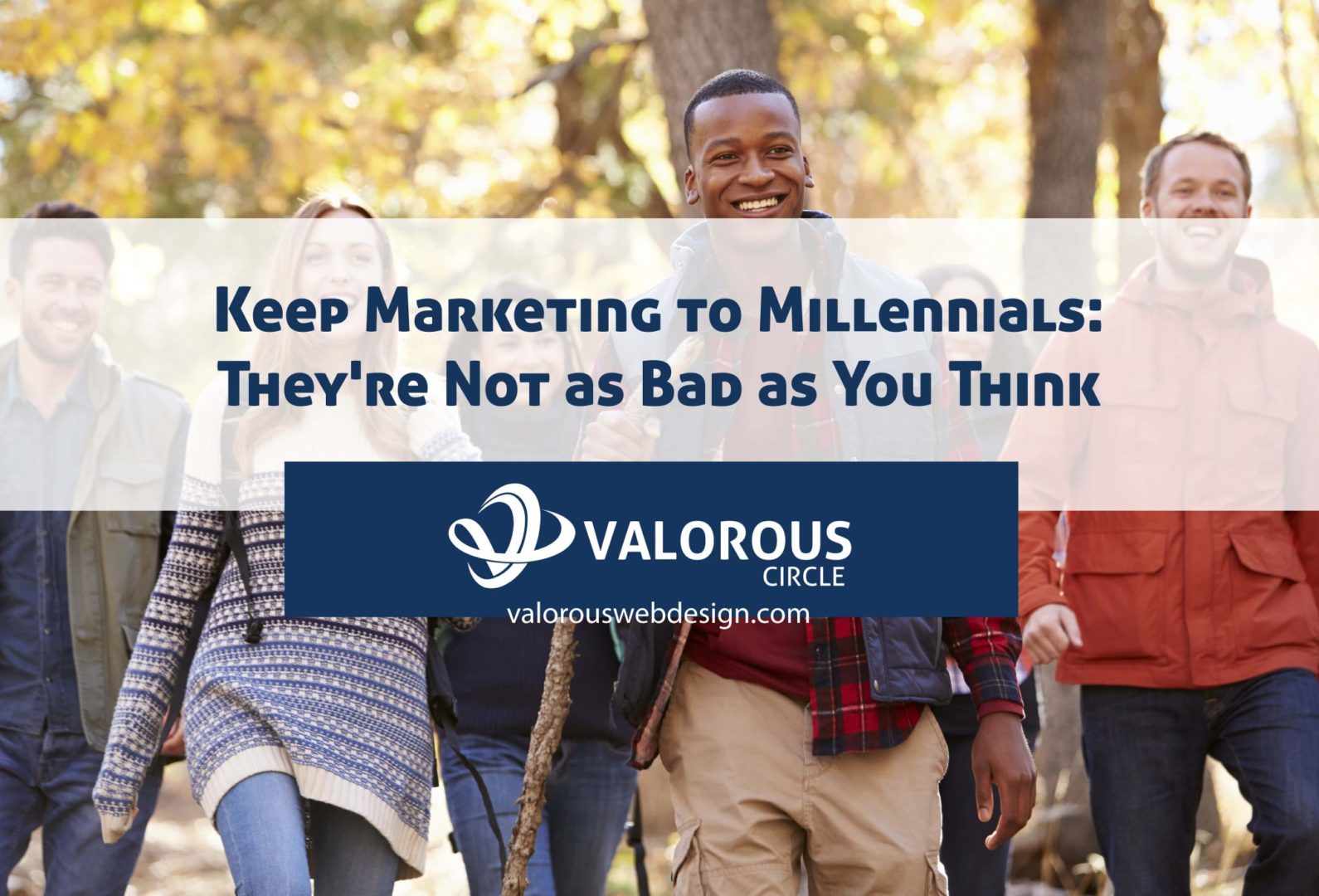If you only pay attention to headlines on 24-hour news crawls you’d think modern businesses are all reeling from the havoc millennials cause on a daily basis. So marketing to millennials must be awful, right?
Yes, and No.
The list of things millennials are killing is as extensive as the list of things that continue to survive improbably. If it’s not beer and napkins, it’s cereal and bars of soap. Millennials seem to have no problem forsaking diamonds for other jewels, banks for money sending apps, department stores for boutiques, chain restaurants for gastropubs, and TV for streaming services.
And yet marketing to millennials is still wrought with challenges despite the generation of 20-37-year olds surpassing the Baby Boomers as the U.S. population leader in 2016.

3 Main Issues When Marketing to Millennials
Age Range
It’s quite hard to point to a specific year when the Millennial generation began. Most put the start date as 1980-1983, or just after the dawn of the personal computer.
Some have the dates ranging as far back as 1977 – around the onset of Apple and Microsoft. But many agree that the end of the 1990s, 1997 to 2000, is where the age cohort ends. And that is what makes Millennials so incredibly challenging to target in modern advertising.
Technology and outreach stayed mainly the same for both the Baby Boomers and Generation X.
Outside of creativity, advertisements and marketing messages on network television, newspapers and magazines, and billboards remained the same until computing power put the world into the office and later the family home.
A millennial can remember growing up in the age of Black Monday, the fall of the Berlin Wall and the L.A. riots.
Experiencing the events of Waco, O.J., and the Oklahoma City bombing, marveling at the flip phone, modern flat-screen TVs, while listening to boy bands, under the shadow of the impending Y2K ‘doom’ will make a person in their mid-30s see the world in a far different light than as a 20-year-old college junior.
Inheritance
Generation X benefited greatly from the Baby Boomers booming. The post-war urban sprawl gave way affordable housing developments, new job centers, and accessible education during times of non-interventionist political behavior. And will experience the greatest wealth increase over the next few years.
What Generation X left the millennials was quite the opposite. There is not one specific thing that leads a generation to offer less than what it received, but there is no denying millennials have less wealth per capita than their parents.
There are roughly 20 million less Gen Xers than Baby Boomers. Because of this decline, more efforts to preserve wealth lead to the disparity we see today.
A stock market crash followed by expensive wars exasperate and already struggling social safety net. Unpopular leaders and political scandals force a mistrust in longstanding institutions. What makes for great late-night entertainment is often bad for the country.
And as distrust in traditional institutions grows, so does suspicion in conventional marketing avenues. Newspapers become increasingly polarized, so fewer people read.
Television is booming, but its channels expand to allow for more dynamic voices. And the internet starts to take hold, connecting people to each other in ways unseen.
9/11
The oldest section of the Millennial generation saw the events of 9/11 and was galvanized to preserve, protect and defend. It was a rallying cry for the entire country of high school and college graduates ready to lead in the new world era.
The younger section may remember more the devastation of war compounding with financial hardships eventually leading to the Great Recession. As a two-party system falters politically, so does the standard strategy of ‘us vs. them‘ sales messaging.
Similar to the Challenger disaster experienced by Gen Xers, 9/11’s impact on the psyche of Millennials is profound as it affects the worldview of 75 million people.
Regardless of their age in the spectrum, messages of safety may be met with hostility and overreach, or language one sees as offensive or oppressive could be jocularity to others.
The generation that follows the Millennials is Generation Z (iGen), the age range containing those who did not see the events of 9/11 as they were happening. Sure, from old YouTube clips and textbooks they know it happened. But none of them felt it.
The impact of such a tragedy like 9/11 is by far the single most unifying thing millennials share, which also leads to the most prominent schism within the group and leads to the biggest question.
How Do You Reach Millennials?
Marketing to Millennials is all over the map when it comes to developing a plan. What message is inclusive or informative enough to a specific target? When is the right time to bring your product to market? And what media do you roll out? Here are two significant elements that will help.
Go Digital
In everything. Constantly. Have a presence on social media. After all, Millennials created it. Have a good website. Boomers may have built modern day computers, but Millennials advance the technology.
Stop spending money on newspapers to print ads that will line hamster cages. Spend the money on digital news sources, even if they’re behind a paywall.

Digital subscriptions at the New York Times, the nation’s paper of record, surpassed home delivery and newsstand sales in 2017 – while increasing revenue.
Stream your services. Go Live. Be in your face, and in their Facebook feed.
On average, Americans own 3.2 devices and use more than one social media app to read the news of the world.
If your website isn’t responsive (translateable from desktop to mobile) or your social media page is brandless, it’s time to change that NOW.
Nostalgia is Your Friend
Marketing to millennials also needs to rely on thoughts of better times. Reminding someone of a less complicated childhood while telling them so on their smartphone is OK.
Think of the most popular movies of the last few years. The ones that popped into your head were likely remakes, long-awaited sequels or reboots of movies or TV made not too long ago.

Of the top-15 films at the 2017 domestic box office, only Dunkirk (9) and Get Out (11) were original live-action productions not based on material debuting on or after 1990.
The following shows – Fuller House, Will & Grace, Ducktales, Roseanne, Girl Meets World, Lethal Weapon, Voltron, Gilmore Girls: A Year in the Life, The X-Files, Twin Peaks and The Magic School Bus – are all based on film and television that began as early as the mid-1980s, right when the earliest millennials’ memories started to form.
Marketing to millennials should be the dominant strategy of any marketing plan.



